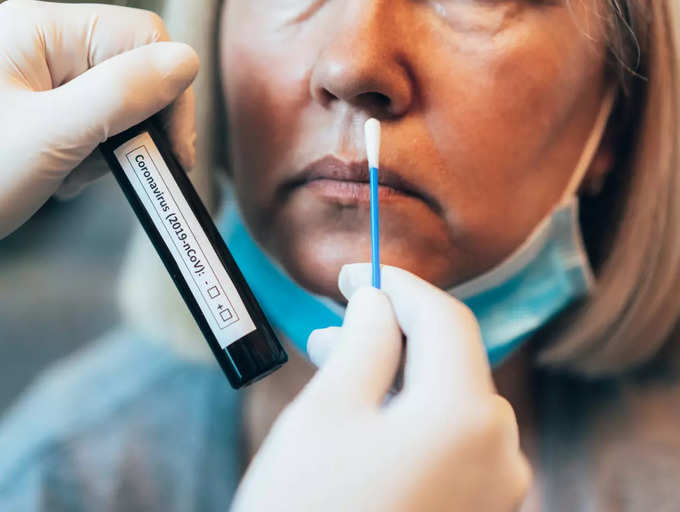Worried about long-COVID? Here are the symptoms to spot it
Here's how to spot long COVID symptoms

Even after getting cured of COVID-19, people are worried about its long-term implications. "Long lasting sequelae of COVID19 are frequent," the World Health Organisation (WHO) had said in October in view of emerging reports on the long lasting impact of COVID-19. "Post COVID-19 condition occurs in individuals with a history of probable or confirmed SARS-CoV-2 infection, usually 3 months from the onset of COVID-19 with symptoms that last for at least 2 months, that cannot be explained by an alternative diagnosis," it has said.
Currently, globally cases of COVID-19 are rising.
Going through verified data from various government organisations and research bodies, it can be said the long term impact of COVID-19 can affect any body organ depending on the reaction of the host body with the coronavirus and its ability to recover from the infection.
There are more than 100 long-COVID symptoms, a study finds

A study done by researchers at the University of the West of Scotland have found more than 100 symptoms associated with post-COVID conditions. "Named initially by patients themselves, the term long COVID has become the most commonly used phrase to describe the condition and broadly describes individuals who have recovered from acute COVID-19, but experience symptoms which are persistent or very slow to resolve," the researchers say.
Why do long COVID symptoms go unnoticed?

Most of the long COVID symptoms are remotely related to acute COVID symptoms. Hence, it is difficult to ascertain if a certain symptom is related to COVID or not. After recovering from an infection, nobody would doubt brain fogging to be its side-effect.
"...that long COVID is typified by a disparate array of symptoms, across multiple physiological systems, and may often result in individuals experiencing their own idiosyncratic manifestation of the condition," the study says.
What are the common long COVID symptoms?
The common long COVID symptoms will fall into the categories of sensory, respiratory, pain, and fatigue, the researchers say. This statement holds truth when compared with the data released by governments in their advisory. The list of symptoms released by the US Centres for Disease Control and Prevention (CDC) would broadly come under the four categories.o, those who are infected with coronavirus or have already been and have recovered should understand what long-COVID symptoms are so that their effect can be mitigated.
Fatigue

WHO says fatigue to be one of the most frequently reported problems in patients after COVID. In this, a person gets tired without doing much physical activity.
Being tired is often associated with post-exertional malaise, which means an exacerbation in the symptoms after a physical or mental activity. As per the WHO, fatigueness is many individuals is also reaching to post-exertional malaise.
How to spot this symptom? When your body feels completely spent even after a minor physical or mental activity you should know that this is a long COVID symptom and seek medical assistance.
Cognitive dysfunctioning

Another most common symptom which is being extensively studied by researchers is cognitive dysfunctioning or brain fog. This is when you feel sluggish and fuzzy while trying to think about something.
How to spot this symptom? Cognitive challenges can be tough to deal with. It will have a huge impact on your daily activities. You will experience this frequently and even at times it will be difficult for you to return to normal.
Respiratory symptoms
Respiratory symptoms include difficulty in breathing, lingering chest pain, noisy breathing, congestion in the respiratory tract, and others. Having respiratory issues can affect the normal functioning of the body.
How to spot this symptom? Respiratory issues usually don’t overstay. So, if your breathing issues persists for a long time, then it's time to head for a detailed checkup. Also, frequent respiratory issues will hamper your sleep pattern. So if you are not getting enough sleep and have no other conditions to check for, then seek medical assistance.
Pain
Nerve and muscle pain are also among the common symptoms of long COVID. Persistent occurrence of the pain in muscles after one recovers from COVID should neither be taken lightly, nor should it be assumed to be a normal occurrence. Very often we endure such pains and give them time to progress.
How to spot this symptom? If you did not have any history of medical complications involving muscle pain then once such complication starts after COVID-19 recovery you should not ignore it and consult experts.
Other symptoms
Loss of taste and smell, headaches, nerve and muscle pain, sleep disturbances, mobility issues, have also been found in patients after recovering from COVID.
These symptoms may seem common to you, but once you have noticed it do not let it grow on you. Take necessary precautions and preventive measures to combat the risk associated with the development of this disease. “A further complication is that not only are long COVID symptoms disparate from acute COVID-19 symptoms, their severity is unrelated to initial acute infection severity,” a research study says.